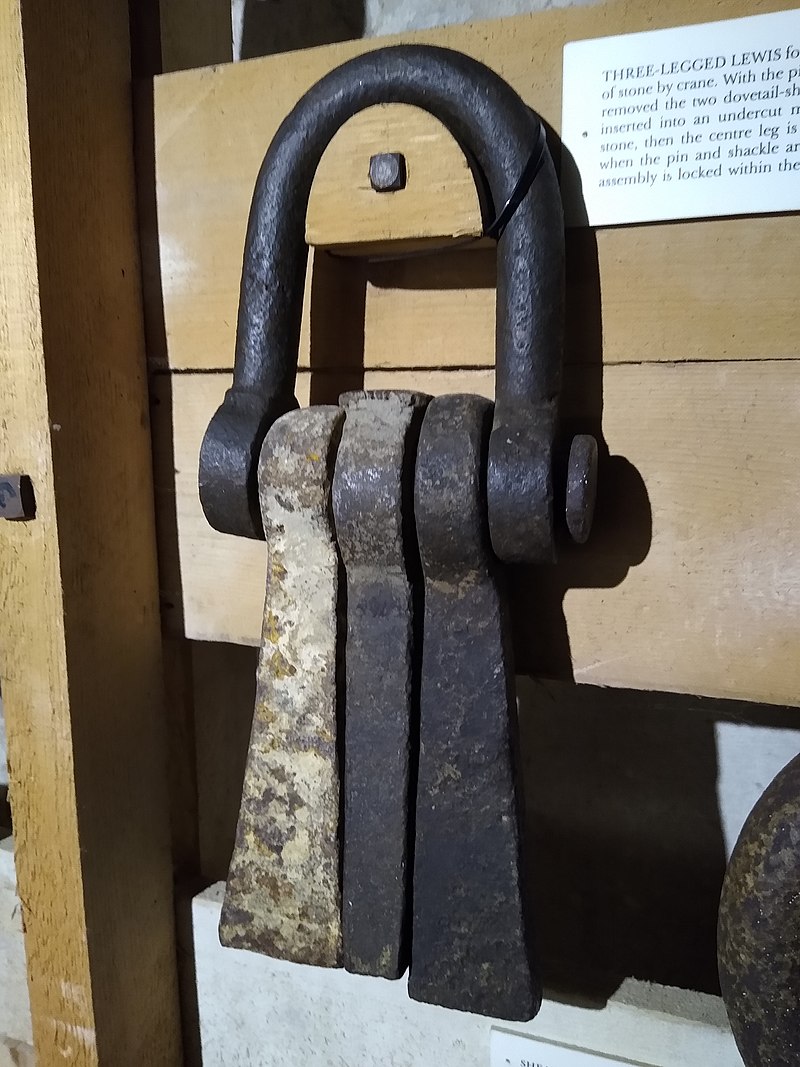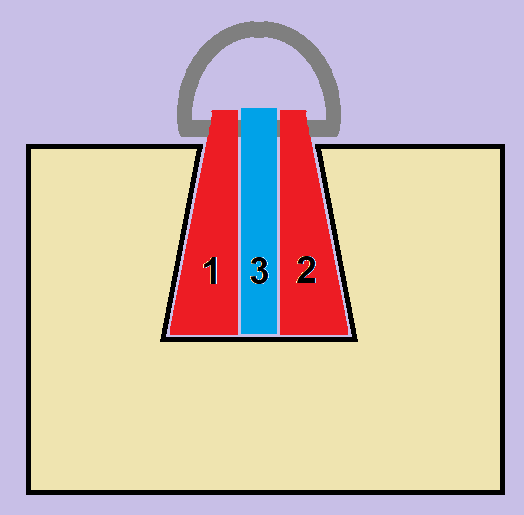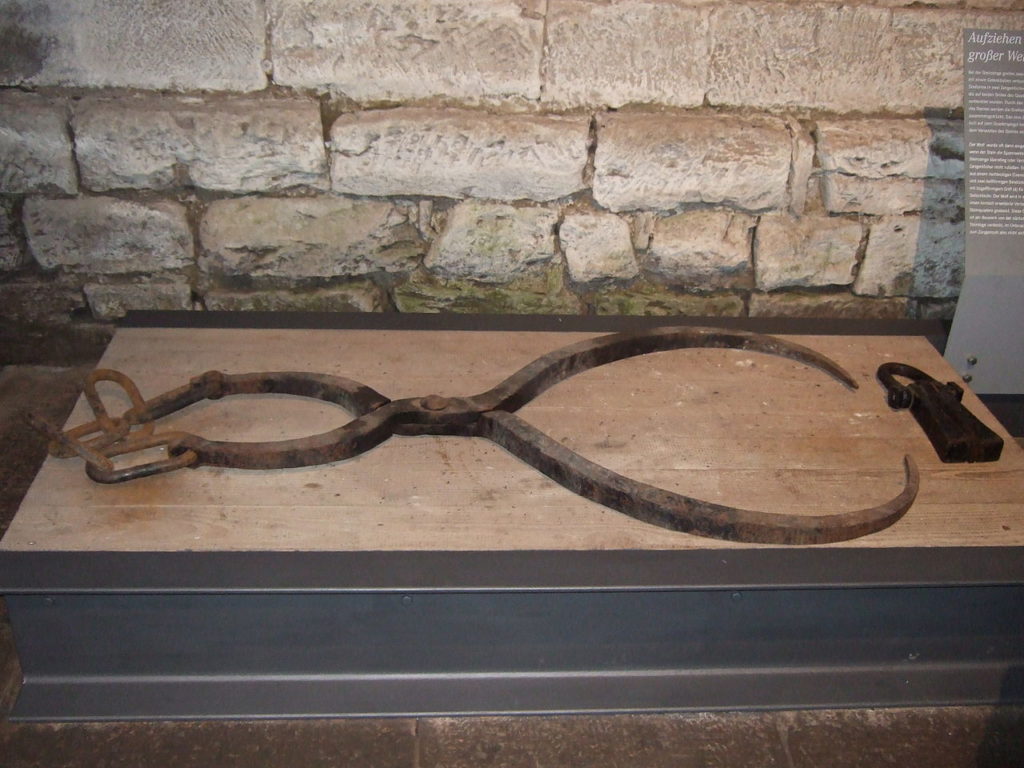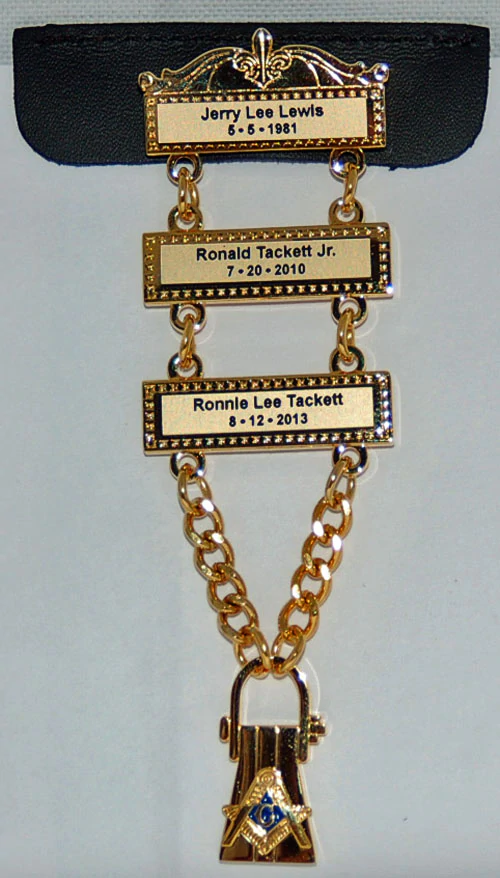
The Masonic lewis is an ancient, stone-working tool that symbolizes a Master Mason whose father is also a Master Mason. This honor extends to grandfathers, stepfathers, and other patriarchs within the Master Mason’s family tree. The lewis tool, and variations of it, are still in use by operative masons today. The Masonic symbol is a distinctive honor in multiple, Masonic jurisdictions within the United States. While not as ancient as the original tool, the Masonic lewis has a rich history within the fraternity.
Lewis Lifting Device

The lewis tool’s usefulness is in the lifting and placing large stones. The lewis is an ingenious device, using the weight of the stone itself to create a secure connection between the lewis and stone while suspended. Variations of the lewis exist, but they all fall into two categories: pin-based and external. Both variants are still in use today.
Pin lewis types include three-legged and split pin. Both types require a hole bored in the center of the top side of the stone. The three-legged lewis is five individual pieces: the three legs, connected together to a link by a pin. The hole tapers to a wider length as the depth increases. The outer legs flare out in a comparable manner like wedges. The outer legs are first inserted, followed by the center leg, which pushes the outer legs against the edge of the hole. Then, the pin connects the legs to the link and keeps the legs in place. While lifting the stone, this lewis stays secured because the wedged shape of the combined legs cannot slide out of the tapered hole. The split pin lewis uses a similar method of pressing against the sides of the hole, but with two, scissor-like legs, and a chain connecting them. When lifted, the force applied to the lewis pushes the legs against the sides of the bored hole. The downside of this method is having to bore holes in the stones.

An external lewis, also known as a kerb lifter or stone lifter, does not require boring a hole into the stone. It is similar to the split pin lewis, but the pressure that secures the lewis to the stone moves inward from the exterior of the stone, instead of pressing out from the center of the stone.
Masonic Lewis Pin

The Masonic Lewis pin is a piece of jewelry worn by the son and/or the father if both are Master Masons. A lewis jewel hangs at the bottom of the pin, suspended by chains. From the jewel to the top of the pin are plates with the names of the Master Masons in a family’s lineage, along with the dates each Brother received his Master Mason degree. The Grand Lodge of California, to my knowledge, does not have any regulations regarding the wear of the lewis pin. The Grand Lodge of New York, on the other hand, has specific guidelines for wearing a lewis jewel. Sons and their fathers – including stepfathers – who are Masons may wear the jewel. They may have one bar per each generation of Mason, but the generations must be consecutive. For example, a Mason whose grandfather was a Mason, but whose father was not, is not eligible to wear the pin. According to Masonic author Norm McEvoy, the adoption of the lewis jewel in the United States also includes the Grand Lodges of Vermont, Texas, Massachusetts, Virginia, and Connecticut.
Masonic Lewis History
McEvoy cites the Junior Warden’s Lecture from the Grand Lodge of England, circa 1801, as the document that defined the lewis as the son of a Mason. McEvoy also specifies the duty of a Masonic lewis, “[H]is duty is to bear the heat and burden of the day, from which his parents, by reason of their age, ought to be exempt; to help them in time of need, and thereby render the close of their days happy and comfortable; his privilege for so doing is to be made a Mason before any other person however dignified.” The duty of a lewis is to care for his parents, with the incentive of earning membership within Freemasonry by doing so. Philanthropic Lodge F&AM of Massachusetts, cites the following Albert Pike quote about the son of a Mason, “It is one of the duties of Brotherhood, arising out of that holy relationship, to guide and guard, and rear and educate, if need be, a Brother’s children. Let us recognize this duty, and add to its obligation our solemn pledge to watch incessantly over this youth, to avert from him pestilential influences, warn him against ill examples, and rescue him from perils. Let us, according to our ancient custom, and by the ancient and symbolic name, receive him as our Ward in the hope that he will in due time become our Brother.” In contrast to the Grand Lodge of England account from 1801, Pike’s argument is in favor of caring for the son and protecting him, in the hopes that he follows his father’s footsteps and pursues Masonry. Either way, the lewis jewel illustrates the connection between a father and son who are Masons, regardless of whether the son is holding the father up, the father is carrying the son, or some point between these two positions.
As the lewis device creates a strong bond with a stone, so does the Masonic symbol illustrate the strong bond with a son and father who share the additional connection of Brotherhood through Freemasonry. Also, like the operative lewis, the Masonic lewis jewel will hopefully become a timeless device, allowing the previous generation of Masons to raise the next generation to membership in our wonderful fraternity of Free and Accepted Masons.
